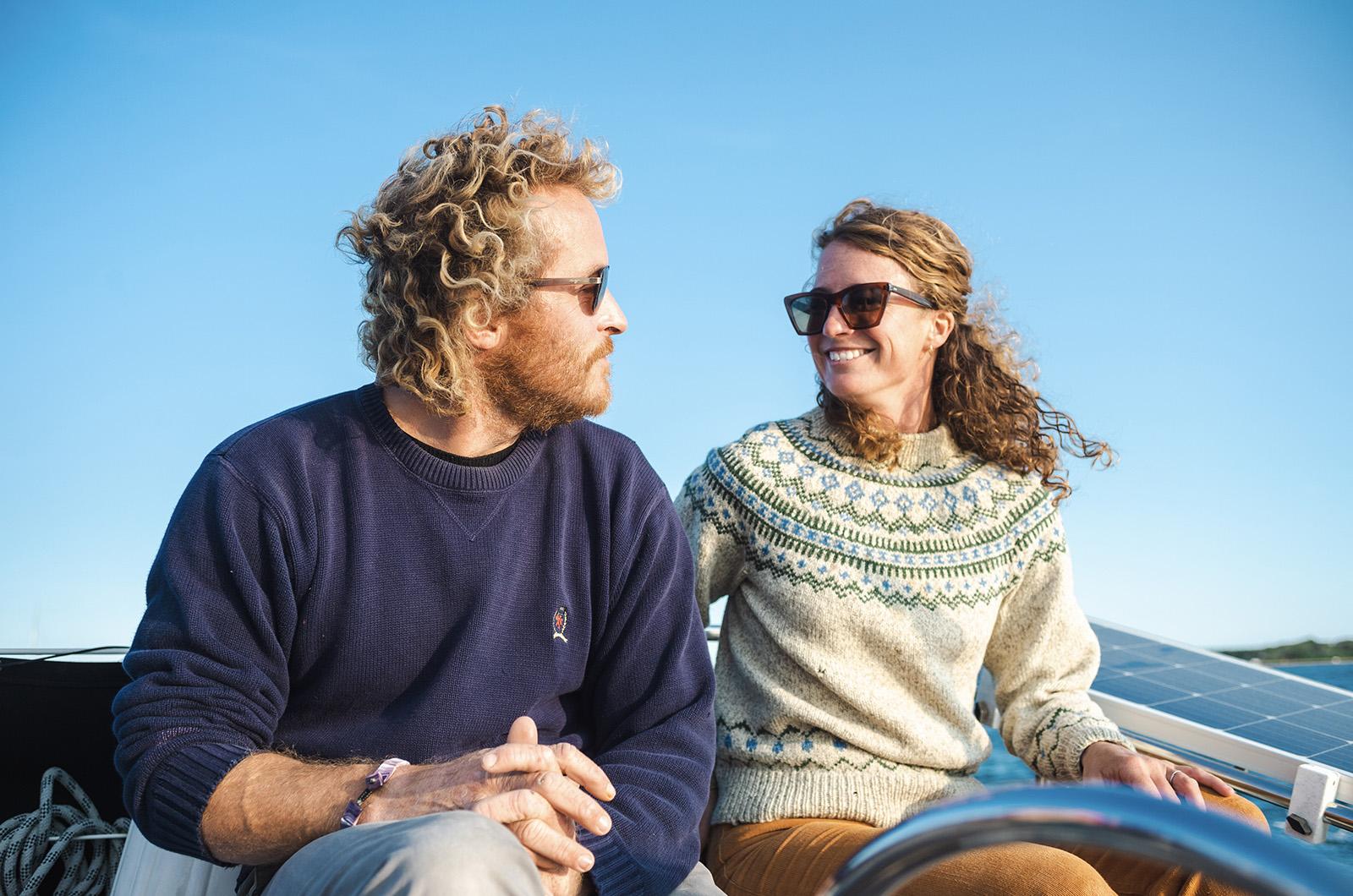In a quiet spot, inside the harbor in Culebra, Puerto Rico, in January this year, Elise Quebec pumped up a wingsurfing wing for the first time.
“I was so embarrassed when I saw somebody else pumping up a wing and he knew what he was doing,” she said.
The guy was Nestor Romero, and he ended up being very welcoming. His boat was anchored beside Elise and her partner Tristan Lodge’s boat, Bia, and they all became friends.
Instead of leaving Culebra after resting for a week as planned, Tristan and Elise stayed for the rest of the winter. They had left Vineyard Haven on Dec. 26 with Elise’s twin brother, Chris, and Tristan’s brother, Conor. They pointed the 42-foot 1983 Swann offshore, sailing against headwinds.
“We were 30 hours away and there was water in the boat over the floorboards,” Tristan said.
“I was bailing with the dinghy pump and a bucket,” Elise said.
“There’s a moment there, you have to really think about what you’re doing,” Tristan said.
“We all decided we didn’t want to turn back,” said Elise.
“It took a while.”
“A lot of sponging.”
“But I was able to follow the leak all the way up to the stem. There was an old hole there for a nav light,” Tristan said.
“It still has the same blob of silicone over it,” Elise pointed out.
Tristan explained: “You really don’t know where it’s going to leak until there are waves on the bow for days.”
Boats like Bia were built with stylish wood interiors but to the same designs, alongside them, serious racing boats were built as well. Bia can travel fast very close to the angle of the wind. When you sail like this you generally are moving in the opposite direction of ocean waves. The force with which the boat contacts water is multiplied. Seams around hatches, portholes and lockers that have been tight for years while a boat sails on flat water, will begin to weep when she starts really banging into waves.
A forgotten three-eighths hole under a bow roller would become a geyser.
“We spent all winter chasing down leaks,” Tristan said.
“I’ve learned that staying calm is the most important thing you can do,” Elise said.
When Nestor learned that Elise and Tristan were from Martha’s Vineyard, he told them he wanted to sail back with them. He had met Nat Benjamin when Nat was traveling in Culebra, years before, on his own boat, the schooner Charlotte. Nestor thought sailing with Tristan and Elise would provide experience to prepare him to sail his own boat back to Vineyard Haven. Nestor is from the island of Culebra and has spent most of his life there.
“I’d love to come back here and build boats,” Nestor said after the trip when he visited the Gannon and Benjamin boatyard. “My father would love this place. He builds everything: cars, boats, engines, houses.”
Tristan later said, “My dad was a ferry captain. We’d rent our house out and live on a boat for the summer. Nestor’s family lost their house in a hurricane, but then they lived on a 28-foot Cape Dory for a couple of years. It’s an environment we both really get and are comfortable in. It was fun to share that.”
During the return trip from Culebra to Vineyard Haven, on the night after Bia crossed the Gulf Stream, Tristan noticed a pod of dolphins had begun to play alongside the boat. A previous owner had installed underwater lights, and on a lark Tristan flipped the lights on to see the dolphins. When the dolphins erupted in activity, Nestor joined him on deck.
Elise came out a minute later. “Something smelled horrible,” she said. “I didn’t know what was going on.”
“I thought something flew by my face, but in the excitement I couldn’t tell what was happening,” Tristan said. “I almost couldn’t believe it. When I turned the spreader lights on you could see it everywhere: the dolphins were kicking fish onto the deck of our boat.”
“I smelled it before anyone knew what was happening,” Elise said.
“Big flying fish,” Tristan said. “My greatest regret of the whole trip was I didn’t eat any of the fish the dolphins gave us.”









Comments
Comment policy »